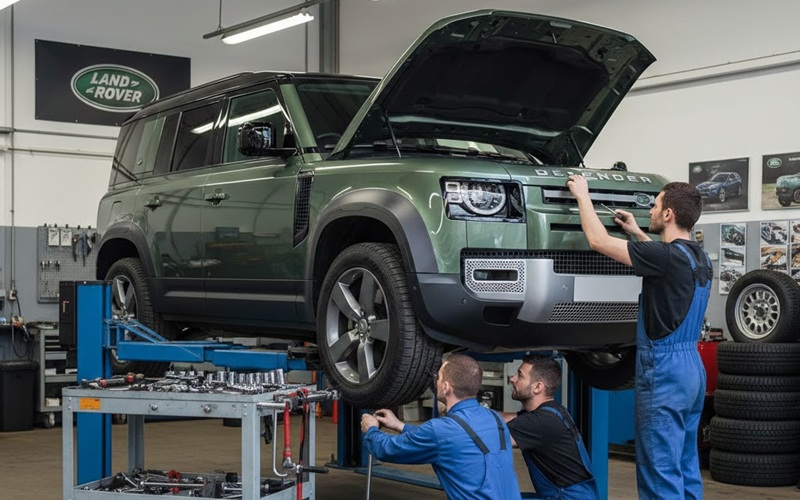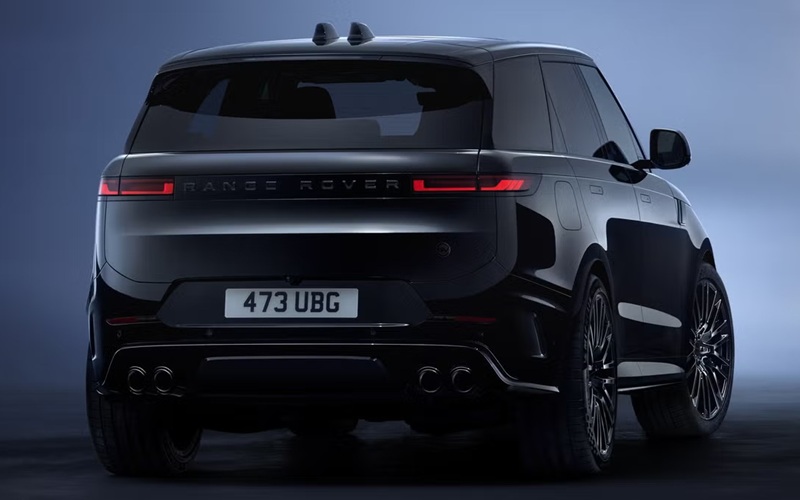The Land Rover Velar combines sophisticated design with advanced all-terrain capabilities, making it a compelling option for drivers who face challenging winter conditions. At the heart of the impressive cold-weather performance of the Velar lies its sophisticated Terrain Response 2 system, which includes specialized modes specifically engineered for snow and icy conditions. These intelligent driving modes transform the Velar from a refined luxury SUV into a confident winter companion.

Terrain Response 2 System Overview
The Velar features the latest generation of the Land Rover patented Terrain Response 2 system, which delivers exceptional performance across varied surfaces. This intelligent technology continuously monitors driving conditions and automatically optimizes the vehicle’s settings to match the terrain beneath its wheels.
The latest model receives enhanced processing power that allows for more rapid assessment of changing surface conditions—particularly valuable during winter driving when patches of ice, compacted snow, and clear pavement can alternate within metres. The system can now detect surface changes and adjust settings in approximately 300 milliseconds, significantly faster than previous generations.
Grass/Gravel/Snow Mode Functionality
The primary winter driving mode in the Velar Terrain Response 2 system is the Grass/Gravel/Snow setting (often abbreviated as GGS). When activated, this mode implements a comprehensive suite of adjustments designed to enhance traction and stability on slippery surfaces.
The Velar GGS mode modifies throttle response to prevent wheelspin, adopting a more progressive power delivery that allows for gentler acceleration. Simultaneously, the transmission shifts earlier to keep engine revs lower, reducing the likelihood of breaking traction. The system also adjusts the electronic differential settings to optimize torque distribution between the wheels.
The electronic stability control becomes more sensitive in GGS mode, intervening earlier but with more subtle corrections to maintain vehicle stability without disrupting momentum on slippery surfaces. The anti-lock braking system accommodates the reduced friction available on snow and ice, with pulse intervals for winter conditions.
Dynamic Stability Control Winter Enhancements
Beyond the GGS mode, the Velar incorporates enhanced Dynamic Stability Control (DSC) programming specifically for winter driving scenarios. The system features a specialized Snow Traction Launch mode that manages torque delivery during initial acceleration from standstill—often the most challenging moment when driving on icy surfaces.
This year, Land Rover equips the Velar with an improved Low Traction Launch function, which drivers can manually select when starting on slippery surfaces like ice-covered driveways or unplowed snow. The system restricts torque and adjusts differential action to maximize grip during those critical first moments of movement.
Engineers refined the Hill Descent Control (HDC) system for winter operation, allowing it to maintain precise speed control on downhill slopes across all surface conditions. The latest model lets you adjust variable descent speeds in 0.5 km/h increments for greater control on icy inclines.
All-Terrain Progress Control in Winter Conditions
The Velar All-Terrain Progress Control (ATPC) system—essentially an off-road cruise control—has been enhanced with winter-specific programming. This system allows drivers to set a target crawl speed between 1.8 and 30 km/h, which the vehicle will maintain regardless of surface conditions, allowing the driver to focus solely on steering.
The ATPC winter calibration adjusts the parameters that control wheel slip, permitting a slightly higher slip threshold that maintains forward momentum in deeper snow while still preventing excessive wheelspin. This intelligent balance between traction and progress is particularly valuable when navigating through varying depths of snow, where maintaining momentum is crucial.
The system now adds a new “Snow Crawl” mode that operates at extremely low speeds (1.8-5 km/h) with specialized traction parameters designed for navigating parking lots or driveways with packed or deep snow.
Integrated Chassis Control for Winter Driving
The Integrated Chassis Control (ICC) system works in concert with the winter driving modes to deliver a composed driving experience in challenging conditions. When GGS mode is selected, the adaptive dynamics system, which controls the suspension damping, adjusts to prioritize stability over performance.
On models equipped with air suspension, the system can automatically adjust ride height based on conditions. In deep snow, the suspension can raise by up to 50 mm to increase ground clearance, while at highway speeds in winter conditions, the vehicle lowers slightly to improve stability and aerodynamics.
The latest model introduces enhanced sensors that can detect when the vehicle is driving on ice, automatically adjusting stability control parameters even if the driver hasn’t selected the appropriate Terrain Response mode. This “intelligent surface detection” adds an additional layer of safety during winter driving.
Five Facts About the Velar Winter Driving Modes
- The Velar Terrain Response 2 system underwent over 30,000 hours of cold-weather testing in environments ranging from -40°C to just below freezing to ensure performance across all winter conditions.
- Artificial intelligence analyzed thousands of hours of expert winter driving to develop the snow mode’s throttle mapping and create the optimal response pattern.
- The snow mode’s throttle mapping was developed using artificial intelligence that analyzed thousands of hours of expert winter driving to create the optimal response pattern.
- Engineers use special low-friction surfaces that replicate ice at normal temperatures to develop and refine the Velar winter driving modes year-round, regardless of seasonal conditions.
- The Velar winter driving algorithms incorporate geographical data from the navigation system, automatically suggesting mode changes when approaching known challenging winter environments like mountain passes or lake-effect snow regions.
Questions and Answers About the 2025 Land Rover Velar Snow and Icy Driving Modes
How do I activate the snow driving mode in the Velar?
- To activate the Grass/Gravel/Snow mode, use the Terrain Response selector on the center console or touchscreen interface. Select the snowflake icon, and the system will automatically optimize vehicle settings for winter conditions.
Does the Velar automatically detect when I’m driving on snow or ice?
- This luxury SUV features intelligent surface detection that can automatically adjust stability control parameters when ice is detected, but for optimal performance, manually selecting the Grass/Gravel/Snow mode is recommended.
How does the snow driving mode affect fuel efficiency?
- The Grass/Gravel/Snow mode typically results in slightly higher fuel consumption due to the earlier upshifts and modified torque distribution. However, the improved traction often prevents wheelspin, which can waste fuel in winter conditions.
Can I use the snow driving mode on dry pavement?
- While you can use the Grass/Gravel/Snow mode on dry pavement without harming the vehicle, it will result in reduced performance and responsiveness. The system is designed to return to normal driving mode once better traction is detected.
What is the difference between Low Traction Launch and the regular snow driving mode?
- Low Traction Launch is for starting from a complete stop on extremely slippery surfaces, providing maximum traction for those first critical metres. The Grass/Gravel/Snow mode optimizes the entire driving experience on winter surfaces once the vehicle is in motion.
Does the Velar winter driving mode affect the all-wheel drive system?
- Yes, in Grass/Gravel/Snow mode, the intelligent all-wheel drive system adjusts its torque distribution to provide more even power delivery between front and rear axles, with the ability to precisely control torque to individual wheels for optimal traction.
How does All-Terrain Progress Control help in snowy conditions?
- All-Terrain Progress Control functions like a low-speed cruise control for challenging surfaces, maintaining a set speed between 1.8 and 30 km/h without driver throttle input. This allows the driver to focus entirely on steering while the system manages traction.
Are winter tires still necessary with the Velar advanced snow driving modes?
- Yes, winter tires remain essential for optimal performance in snow and ice. The winter driving modes maximize the available traction, but they cannot create grip that isn’t there. Winter tires provide the necessary traction that the vehicle’s systems can then optimize.
How does the Hill Descent Control function in snow and ice?
- When activated in winter conditions, Hill Descent Control maintains a set speed on downhill slopes by intelligently applying individual brakes. The latest model allows for speed adjustment in 0.5 km/h increments for precise control on icy descents.
Can the Velar winter modes handle deep snow?
- This luxury SUV can handle moderate to deep snow, especially models equipped with air suspension that can increase ground clearance by up to 50 mm. For extremely deep snow (exceeding 250 mm), caution is still advised despite the vehicle’s advanced capabilities.


